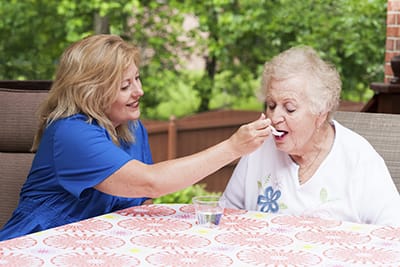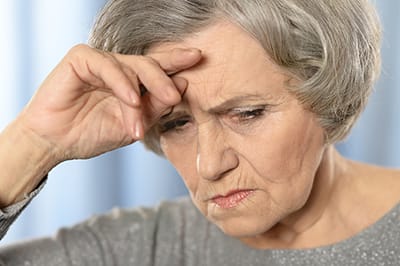Stroke is a leading cause of death and often results in the need for long-term care, but what exactly does it mean when someone suffers a stroke, and why is it critical for a stroke to be recognized as early as possible?

We say that someone has suffered a stroke when a blood flow “accident” has taken place in the brain. Most commonly, this event is an ischemic stroke, or a blocked blood vessel. Sometimes this accident occurs when a blood vessel bursts, leading to bleeding in the brain.
In either case, it is imperative that stroke victims receive medical care immediately. Blood flow to the brain carries oxygen and nutrients which keep the brain healthy. When blood flow is absent, some of the brain tissue dies, resulting in a loss of function. The longer the blood flow is cut off, the more brain damage occurs.
This means everyone should be armed with knowledge of the signs of a stroke in order to call 911 for in case of emergency. The F.A.S.T. acronym is a quick way to remember the warning signs of a stroke:
- Face drooping
- Arm weakness
- Slurred speech
- Time to call 911
If you haven’t committed this helpful and potentially lifesaving acronym to memory, take a moment to make sure you learn it. The occurrence of stroke is increasing in part due to lifestyle factors including obesity and smoking, especially among people aged 18-50, so education about symptoms is more important than ever.

My Loved One Has Suffered a Stroke. What Happens Next?
Strokes range in severity, so recovery time ranges. Some people are able to quickly go back to their regular activities, while others require around-the-clock care. The loss of function is different for each stroke survivor depending on what part of the brain was affected, how much brain tissue was impacted and how healthy the stroke survivor was prior to the stroke.
Common problems resulting from a stroke include:
- weakness or total paralysis of the arm, hand and/or leg on one side of the body
- decreased ability to concentrate on tasks
- difficulty with expressing ideas and/or understanding others
- difficulty with swallowing and/or speech
- difficulty balancing
- memory issues
- emotional changes – frustration, anxiety, grief
- depression
- lack of awareness of loss of function after the stroke
- vision problems
- difficulty controlling bowel and bladder
Stroke treatment is provided by an interdisciplinary team of physicians, nurses and therapists. Rehabilitation for a stroke can include some or all of the three types of therapy:
- Physical therapy: focuses on improving the patient’s balance and coordination and strengthening the lower extremities. It also includes gait training (walking), as well as stair and wheelchair training.
- Occupational therapy: helps patients perform activities of daily living including dressing, grooming and toileting.
- Speech therapy: works on cognition, memory and speech. They also help address any issues the patient has with swallowing.
Caring for a Stroke Survivor
The patient and his or her family and loved ones are key members of the care team. Surviving a stroke can be a life-changing event for the survivor as well as the caregiver.
As a result, emotional changes can occur for both. These include feelings such as anxiety, frustration, helplessness and sadness. These feelings are normal and are part of the healing process. When these feelings are mild, they usually resolve over time. However, when negative feelings affect one’s ability to enjoy living, socialize with others, or complete daily activities, this is not normal or healthy. These may be the beginning signs of depression.
Depression can develop not only for the stroke survivor, but also for the caregiver or significant other. Depression may not occur for three or more months following a stroke.
For people who have had a stroke, being able to safely drive a vehicle may be a concern. There are driving evaluation centers in some metropolitan areas, but many rural areas lack such centers. The stroke survivor’s physician should be consulted to determine whether the survivor is able to safely drive.
For more information about stroke and to access free resources, visit our partner, the American Stroke Association.